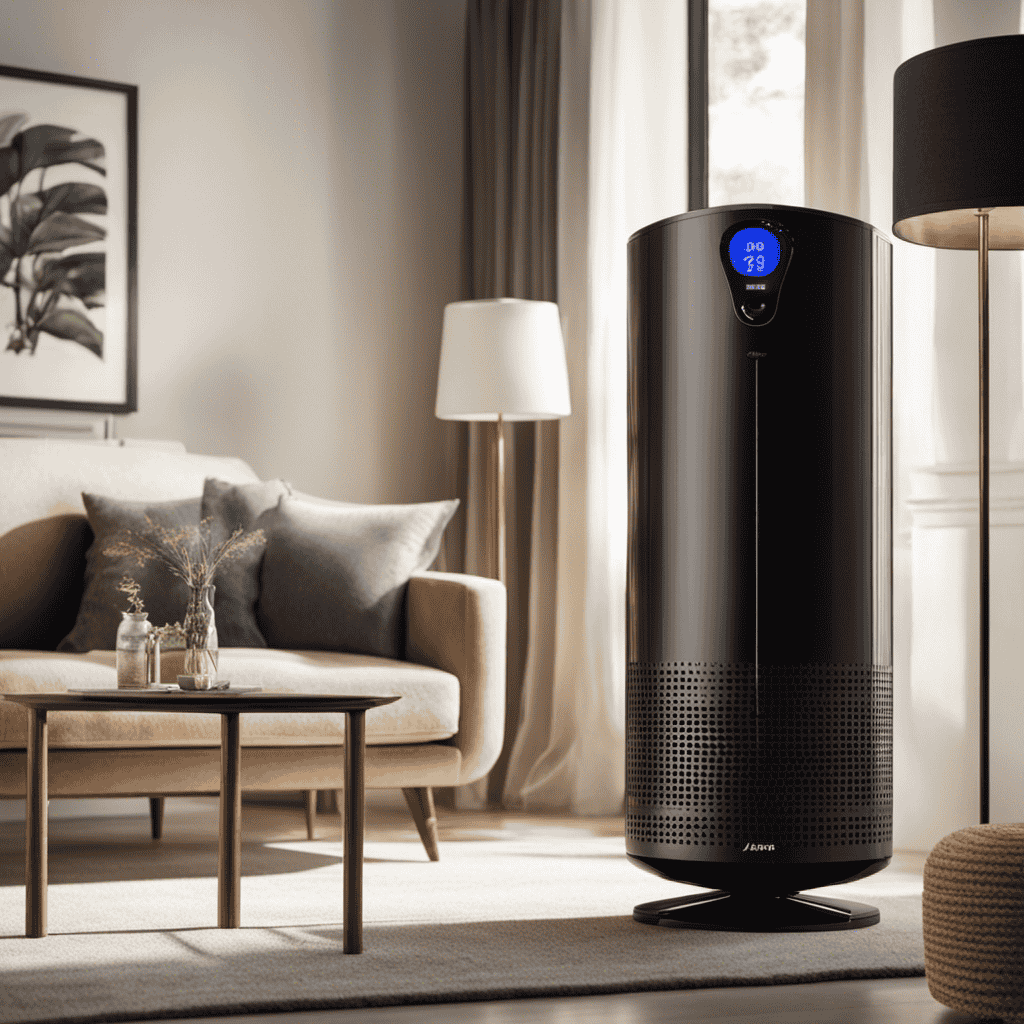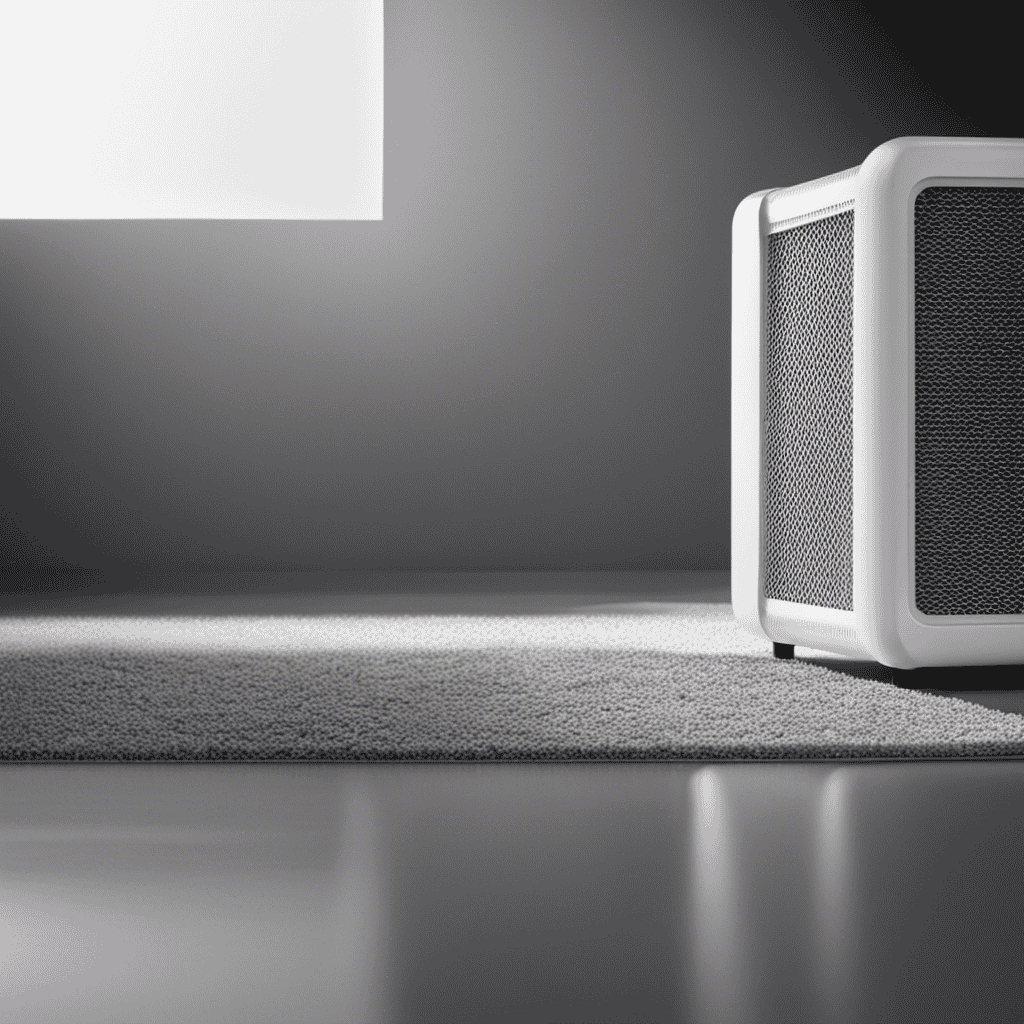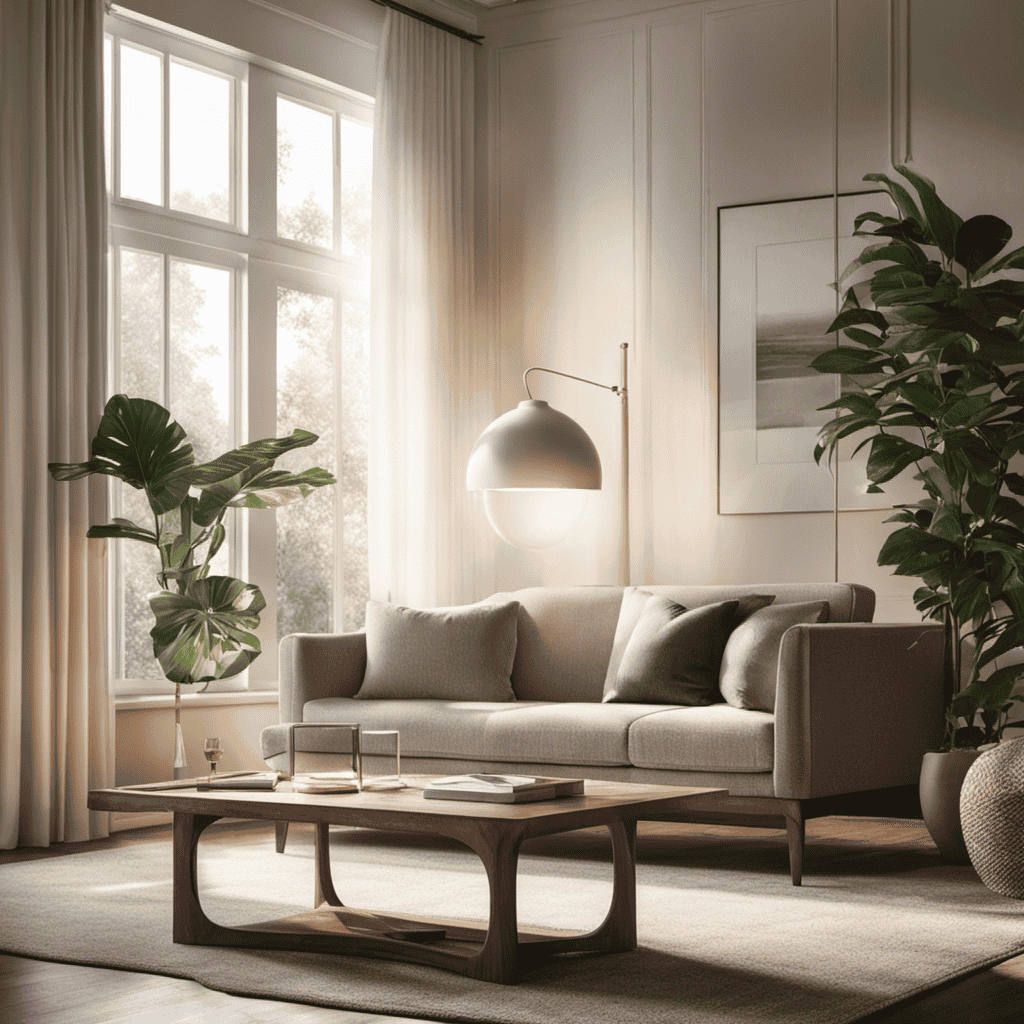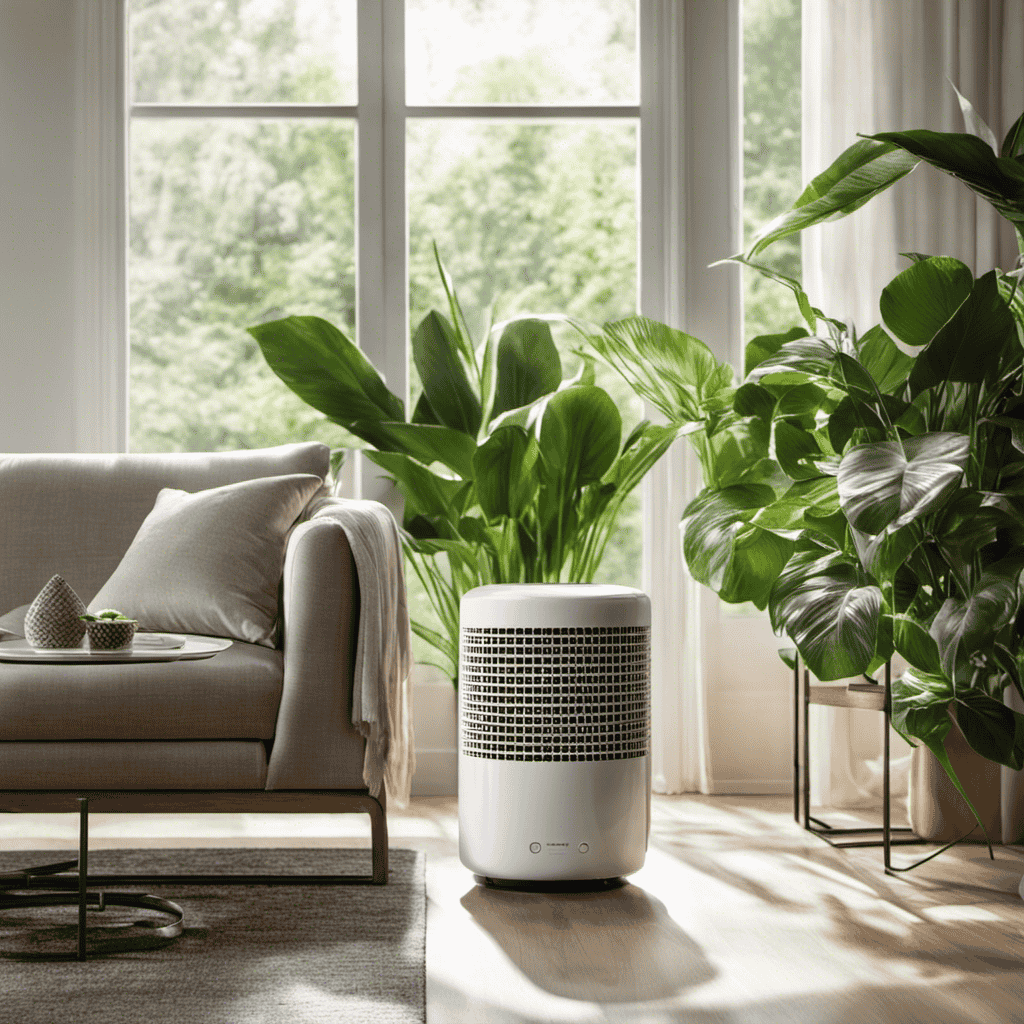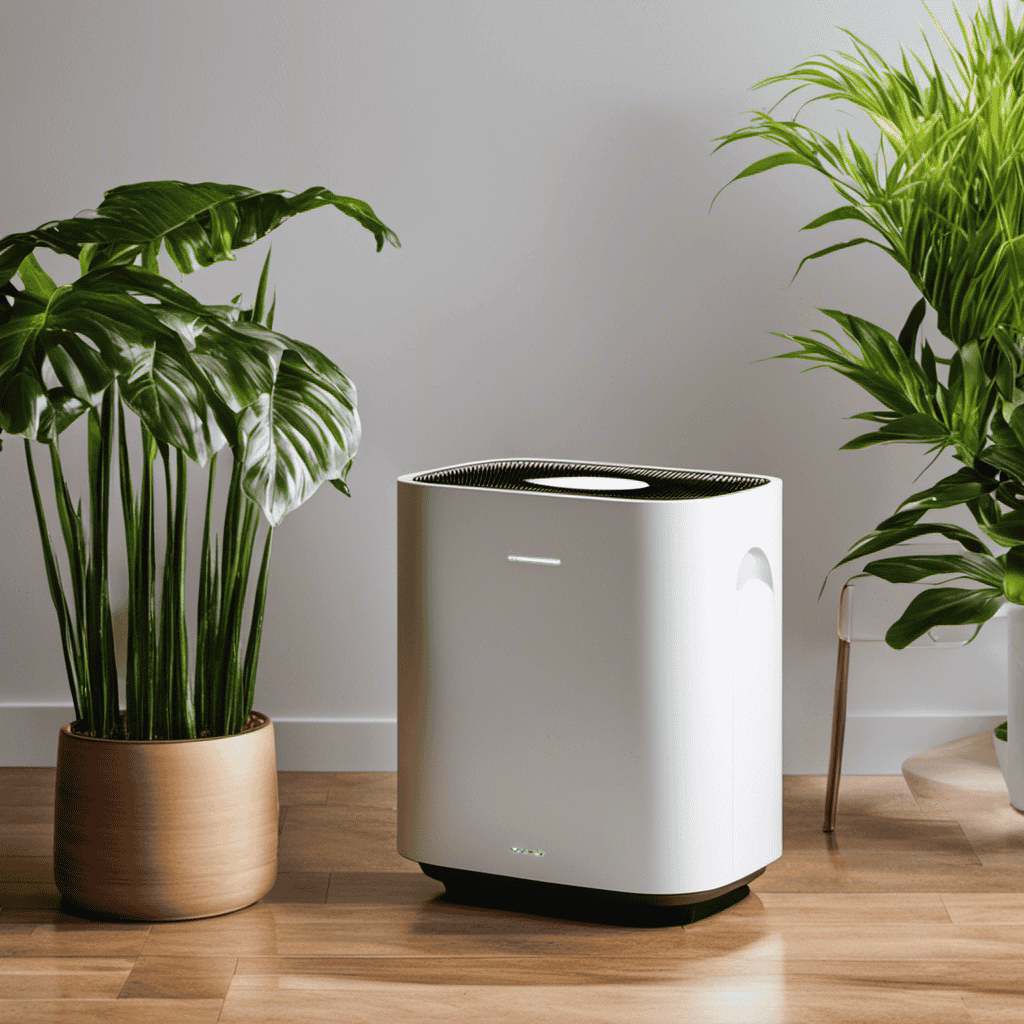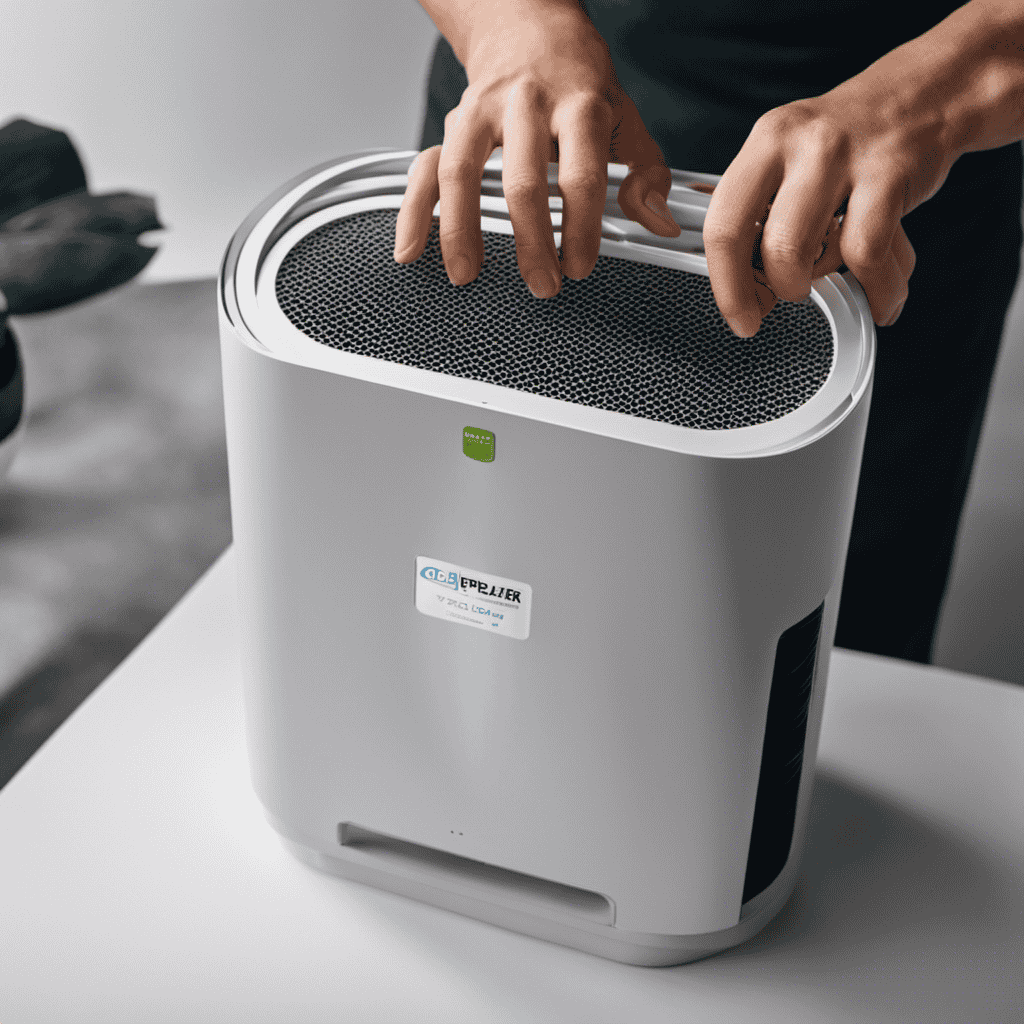In today’s world, indoor air pollution is a growing concern, making it essential to have clean air for a healthy life. Using an air purifier can make a significant difference.
But how often should I use my air purifier? This article aims to provide you with the answers.
By exploring the benefits, recommended frequency, and signs that indicate your air purifier needs more use, we’ll help you make informed decisions in maintaining clean and fresh air in your home.
Key Takeaways
- Using an air purifier regularly improves indoor air quality and reduces pollutants.
- The frequency of air purifier usage depends on factors such as room size, air quality, and the type of air purifier.
- It is generally recommended to run the air purifier continuously or for a significant part of the day.
- To determine the effectiveness of an air purifier, monitor air quality using a separate device, compare pollutant levels before and after running the purifier, and visually assess the decrease in pollutant levels.
Benefits of Using an Air Purifier Regularly
Using an air purifier regularly can greatly improve the quality of the air I breathe in my home. I have done extensive research on the benefits of using an air purifier and the results are quite impressive.
One of the main advantages of using an air purifier is its ability to maximize effectiveness in reducing indoor pollutants. Indoor air can be filled with various pollutants such as dust, pet dander, pollen, and even volatile organic compounds (VOCs) from household products. These pollutants can lead to respiratory issues and allergies if not properly filtered. By using an air purifier consistently, I can ensure that these harmful particles are trapped and removed from the air, resulting in cleaner and healthier indoor air quality.
Additionally, an air purifier can also help eliminate unpleasant odors, such as cooking smells or pet odors, making the atmosphere more pleasant and inviting.
The key to maximizing the effectiveness of an air purifier is to use it regularly and maintain the filters as recommended by the manufacturer. By doing so, I can ensure that my home remains a safe and healthy environment for me and my family.
Factors to Consider in Determining Air Purifier Usage
Considering factors like room size, air quality, and personal preferences can help determine how frequently to run an air purifier. When deciding on the appropriate usage, it’s essential to take into account a few key factors:
-
Room size: The size of the room plays a significant role in determining the frequency of air purifier usage. Larger rooms may require more extended periods of operation to ensure optimal air quality. On the other hand, smaller rooms may only necessitate shorter intervals of purifier usage.
-
Air quality: Assessing the air quality in your home is crucial in understanding the level of pollutants present. Factors such as the presence of allergens, pet dander, or even odors can impact the recommended usage of an air purifier. Using an air quality monitor can help measure the air quality in your home and provide guidance on when to run the purifier.
Taking these factors into consideration can help you determine the appropriate usage of your air purifier, ensuring that you enjoy clean and fresh air in your home. By understanding the factors to consider in choosing an air purifier and how to measure air quality in your home, you can make informed decisions on the frequency of usage.
Recommended Frequency for Operating an Air Purifier
Assessing the recommended frequency for operating an air purifier is crucial to ensure clean and fresh air in your home. As a knowledgeable researcher in the field, I have delved into the subject to provide you with the best advice on the topic.
The best times to run an air purifier will largely depend on your specific needs and circumstances. However, it is generally recommended to run the air purifier continuously or for a significant part of the day to maintain optimal air quality.
The duration for air purifier usage can vary based on factors such as the size of the room, the level of air pollution, and the type of air purifier you have. For example, if you have a small room with moderate air pollution, running the air purifier for 6-8 hours a day might be sufficient. On the other hand, if you have a larger room or live in an area with high pollution levels, running the air purifier for longer periods, such as 12-24 hours a day, may be necessary.
It is important to refer to the manufacturer’s instructions and guidelines to determine the recommended duration for your specific air purifier model. By following these recommendations, you can ensure that your air purifier effectively removes pollutants and allergens, providing you with clean and fresh air throughout your home.
How to Determine if Your Air Purifier Is Effective
To determine if your air purifier is effective, you can monitor the air quality in your home using a separate device such as an air quality monitor. This will give you accurate readings of the pollutants and particles present in your indoor air. Here are two ways to visually understand the effectiveness of your air purifier:
- When you first start using the air purifier, observe the air quality monitor’s readings. Take note of the initial levels of pollutants such as dust, pollen, and pet dander.
- Imagine the monitor displaying high levels of these pollutants, indicating poor air quality in your home.
- Now envision the air purifier running for a few hours and the monitor showing a significant decrease in pollutant levels.
Another way to determine effectiveness is by conducting a before and after test. Choose a specific area in your home, such as the bedroom, and place the air quality monitor there. Record the initial readings and then turn on the air purifier for a designated amount of time. Afterward, check the monitor again to see if there has been a noticeable improvement in air quality.
The Relationship Between Air Quality and Air Purifier Usage
When it comes to optimal air purifier usage, understanding the impact on air quality and frequency of filter changes is crucial.
By using the air purifier correctly, you can effectively improve the air quality in your indoor space.
Additionally, knowing when to change the filters ensures that your purifier continues to function at its best and maintain clean air.
Optimal Purifier Usage
It’s important to find the optimal usage for your air purifier. Maximizing efficiency and reducing energy consumption are key factors to consider. Here are some tips to help you achieve this:
-
Determine the size of the room: Understanding the square footage of the area you want to purify will help you select the appropriate purifier size.
-
Consider the air quality: If you live in an area with high pollution levels or have respiratory issues, you may need to run the purifier more often.
-
Use the purifier strategically: Place the purifier in a central location to ensure maximum air circulation. Keep doors and windows closed to prevent outside contaminants from entering.
-
Utilize the timer function: Set the purifier to run for specific periods, such as during peak pollution hours or while you’re asleep.
-
Regular maintenance: Clean or replace the filters regularly to maintain optimal performance.
Impact on Air Quality
Living in an area with high pollution levels means running the purifier more frequently. Maximizing the effectiveness of an air purifier is crucial for long term benefits. Research shows that continuous usage of an air purifier can significantly improve indoor air quality. By running the purifier consistently, it can capture and remove pollutants such as dust, smoke, and allergens, ensuring cleaner and healthier air. To emphasize this point, consider the following table:
| Benefits of Consistent Purifier Usage |
|---|
| Reduces respiratory issues |
| Minimizes allergy symptoms |
| Removes harmful particles |
| Improves overall well-being |
As you can see, consistent usage of an air purifier has numerous benefits for your health and well-being. However, it is also important to remember that regular filter changes are essential to maintain optimal performance.
Transitioning into the next section about frequency of filter changes, it is important to understand how often the filters should be replaced in order to maintain the effectiveness of the air purifier.
Frequency of Filter Changes
Now that we understand the impact of air quality on our health, let’s dive into the frequency of filter changes and how it affects the performance of our air purifiers.
Filter maintenance is crucial in prolonging the lifespan of your air purifier and ensuring its efficiency. Here are some key points to consider:
-
Regular cleaning: It is important to clean the pre-filter and the main filter of your air purifier regularly. This prevents dust and debris from clogging the filters and maintains optimal airflow.
-
Replacement schedule: Different types of filters have different lifespans. It is recommended to follow the manufacturer’s guidelines for filter replacement to ensure the best performance.
-
HEPA filters: These typically need to be replaced every 6 to 12 months, depending on usage and air quality.
-
Carbon filters: These should be replaced every 3 to 6 months, as they absorb odors and chemicals.
Best Times of Day to Use an Air Purifier
The best times of day to use an air purifier are when you’re sleeping and during peak allergy hours. Research has shown that indoor air can be even more polluted than outdoor air, and using an air purifier can significantly improve air quality in your home.
During sleep, our bodies are in a state of rest and repair, and having clean, purified air can enhance the quality of our sleep and promote overall well-being. Additionally, using an air purifier during peak allergy hours can provide relief for those suffering from allergies or asthma. These hours typically occur in the morning and early evening when pollen and other allergens are at their highest levels. By using an air purifier during these times, you can minimize exposure to these allergens and reduce symptoms.
Transitioning into the next section, it’s important to note that using an air purifier at the right times is just one aspect of maximizing its lifespan. To ensure your air purifier lasts for a long time and continues to effectively clean the air in your home, it’s crucial to follow proper maintenance and care guidelines.
How to Maximize the Lifespan of Your Air Purifier
To get the most out of your air purifier, it’s essential to regularly clean or replace the filters according to the manufacturer’s recommendations. By doing this, you can maximize efficiency and prolong the lifespan of your device.
Here are some tips to help you achieve this:
-
Dust and debris build-up: Over time, the filters in your air purifier can become clogged with dust and debris. This not only hampers the device’s performance but also reduces its lifespan. Regularly cleaning or replacing the filters will ensure optimal airflow and prevent damage to the internal components.
-
Odor control: Air purifiers are designed to eliminate unpleasant odors from the air. However, if the filters are not cleaned or replaced regularly, they can become saturated with odorous particles. This can lead to a decrease in efficiency and an increase in the lifespan of your device. Cleaning or replacing the filters will help maintain the device’s odor-fighting capabilities.
By following these simple steps and adhering to the manufacturer’s recommendations, you can maximize the efficiency of your air purifier and prolong its lifespan.
Signs That Indicate Your Air Purifier Needs to Run More Often
As an expert in air purification, I have conducted extensive research on the topic. I have come across several key points that indicate the need for an air purifier to run more often.
Increased allergy symptoms, such as sneezing and congestion, can be a clear sign that the air in your home is not as clean as it should be.
Additionally, lingering odors in your home, even after cleaning and airing out the space, could be an indication that your air purifier is not working efficiently.
Lastly, if you notice a significant buildup of dust on surfaces, despite regular cleaning, it may be a sign that your air purifier needs to be running more frequently to capture airborne particles.
Increased Allergy Symptoms
If you’re experiencing increased allergy symptoms, you might want to consider using your air purifier more frequently. Allergies can be a real nuisance, causing symptoms such as sneezing, itching, and watery eyes.
Using an air purifier can help alleviate these symptoms by removing allergens from the air. Here are two ways an air purifier can make a difference:
-
Filtering out airborne allergens: Air purifiers are equipped with filters that can capture particles as small as pollen, dust mites, and pet dander. By running your air purifier more often, you can effectively reduce the amount of these allergens in the air, leading to decreased allergic reactions.
-
Improving indoor air quality: Air purifiers not only remove allergens but also help eliminate other pollutants like smoke, mold spores, and volatile organic compounds (VOCs). Cleaner air means fewer irritants, which can help reduce sneezing and other allergy symptoms.
Lingering Odors in Home
Having lingering odors in your home can be frustrating, but there are simple steps you can take to freshen up your living space.
One effective way to combat odors is by using home fragrance products. These products come in various forms such as candles, diffusers, and sprays, and they are designed to release pleasant scents into the air, masking any unwanted smells.
Additionally, if you have pets, eliminating pet odors can be a challenge. Regularly cleaning and deodorizing your pet’s bedding, as well as vacuuming and steam cleaning your carpets, can help reduce pet odors in your home. It’s also important to regularly bathe your pets and keep their living areas clean.
By implementing these strategies, you can create a fresh and inviting environment in your home, free from any lingering odors.
Speaking of cleanliness, another common issue in homes is dust buildup on surfaces.
Dust Buildup on Surfaces
To tackle the issue of dust buildup on surfaces, you can regularly dust your furniture and use a microfiber cloth to trap and remove the particles. Dust removal techniques play a crucial role in preventing dust accumulation, ensuring a clean and healthy living environment. Here are a few effective methods:
- Use a vacuum cleaner with a HEPA filter to remove dust from carpets, rugs, and upholstery.
- Wipe down surfaces with a damp cloth to capture and remove dust particles.
- Pay special attention to areas prone to dust accumulation, such as bookshelves, electronics, and window sills.
- Don’t forget to clean hidden areas, like the top of cabinets and behind furniture.
Tips for Maintaining and Cleaning Your Air Purifier
Here’s a tip: regularly clean the filters in your air purifier to maintain its effectiveness.
Maintaining the filters in your air purifier is crucial for ensuring that it continues to function optimally and provide you with clean, fresh air. Over time, the filters in your air purifier can become clogged with dust, dirt, and other pollutants, which can hinder its ability to effectively remove airborne particles from your indoor environment. By regularly cleaning the filters, you can prevent these issues and maintain the effectiveness of your air purifier.
To clean the filters, start by referring to the manufacturer’s instructions for guidance on the specific cleaning process for your particular air purifier model. In general, most filters can be cleaned by gently vacuuming or rinsing them with water. However, it is important to note that some filters may need to be replaced periodically, as they may not be washable or reusable.
In addition to maintaining the filters, it is also essential to troubleshoot common issues that may arise with your air purifier. Some common problems include a decrease in airflow, strange odors, or unusual noises. If you encounter any of these issues, start by checking the filters to see if they are dirty or damaged. Cleaning or replacing the filters may resolve these problems. If the issues persist, it may be necessary to consult the manufacturer or a professional for further assistance.
How to Use an Air Purifier in Different Seasons
When it comes to using an air purifier in different seasons, there are several key points to consider.
Firstly, understanding optimal seasonal usage can help maximize the effectiveness of your air purifier.
Secondly, adjusting for climate changes is crucial as different seasons bring different air quality challenges.
Lastly, targeting specific allergens can greatly enhance the air purifier’s ability to provide clean and healthy air.
Optimal Seasonal Usage
You should consider adjusting the usage of your air purifier based on the current season. This is important because different seasons bring different air quality challenges.
Here are some factors to consider when using your air purifier during different seasons:
-
Adjusting for humidity levels:
-
During the summer, when humidity levels are high, your air purifier can help remove excess moisture from the air, reducing the risk of mold and mildew growth.
-
In the winter, when humidity levels are low, running your air purifier can help add moisture to the air, preventing dryness and promoting better respiratory health.
-
Impact on energy consumption:
-
During the spring and fall seasons, when air quality is generally better, you may not need to run your air purifier as often, reducing energy consumption.
-
However, during the summer and winter months, when air quality can be compromised, it is recommended to use your air purifier more frequently to maintain a healthy indoor environment.
Adjusting for Climate Changes
In addition to considering optimal seasonal usage, it is important to adjust your air purifier’s settings to accommodate changes in climate. Different climates bring varying levels of outdoor pollutants, such as pollen or dust, into your home.
By monitoring the air quality and adjusting the fan speed or filtration level accordingly, you can ensure that your air purifier is effectively removing these contaminants. For example, during the spring when pollen levels are high, you may want to increase the fan speed or use a higher filtration level to capture more allergens. On the other hand, during the winter when indoor air tends to be drier, you may want to lower the fan speed to prevent excessive moisture loss.
By adjusting your air purifier’s settings to match the climate, you can optimize its performance and maintain clean and healthy indoor air.
Now let’s explore how air purifiers can target specific allergens in the next section.
Targeting Specific Allergens
To effectively target specific allergens, adjust the settings on your air purifier according to the type of contaminants present in your home. By customizing the settings, you can enhance the air purifier’s efficiency and reduce the presence of allergens that may trigger your allergies.
When targeting pet dander, increase the fan speed to maximize air circulation and filtration. This will help capture and remove the tiny particles of pet dander that can easily become airborne. Additionally, consider using a HEPA filter, as it is specifically designed to trap allergenic particles like pet dander.
To reduce pollen exposure, set your air purifier to run continuously, as pollen can be present throughout the day. It’s also recommended to place the air purifier near windows or doors to capture any pollen that may enter your home.
The Role of Air Purifiers in Allergy and Asthma Management
Air purifiers can be beneficial for managing allergies and asthma symptoms. Research has shown that these devices can effectively remove airborne allergens and irritants, helping to improve indoor air quality and reduce respiratory symptoms. When considering the effectiveness of air purifiers in managing respiratory conditions, it is important to understand their capabilities and limitations.
To better understand the impact of air purifiers on respiratory conditions, let’s take a closer look at the table below:
| Air Purifier Type | Effectiveness in Removing Allergens | Effectiveness in Removing Asthma Triggers |
|---|---|---|
| HEPA Filters | High | High |
| Activated Carbon | Moderate | Moderate |
| Ionic | Low | Low |
As shown in the table, air purifiers equipped with HEPA filters are highly effective in removing allergens and asthma triggers from the air. These filters can capture particles as small as 0.3 microns, including pollen, pet dander, and dust mites. Activated carbon filters are also effective in removing some allergens and odors, but their effectiveness may vary depending on the specific pollutants present. Ionic air purifiers, on the other hand, have a lower effectiveness in removing allergens and asthma triggers.
While air purifiers can play a role in managing allergies and asthma, it is important to note that they should be used in conjunction with other preventive measures, such as regular cleaning, proper ventilation, and avoiding known triggers. Additionally, it is essential to choose an air purifier that is suitable for your specific needs and to follow the manufacturer’s instructions for optimal use and maintenance.
Is There a Recommended Frequency for Using an Air Purifier?
When it comes to air purifier usage frequency, experts recommend running the device constantly in heavily polluted areas, while less polluted areas may only require intermittent use. Factors such as allergy sufferers, pets, and smoking may also influence how often you should run your air purifier.
Frequently Asked Questions
Can Using an Air Purifier Replace the Need for Regular Cleaning and Dusting?
Using an air purifier can be a helpful addition to regular cleaning and dusting, but it shouldn’t replace the need for these tasks.
While an air purifier can filter out some airborne particles, it won’t eliminate dust and dirt that settle on surfaces. Regular cleaning and dusting are still necessary to maintain a clean and healthy environment.
Additionally, alternative cleaning methods like using natural cleaners or microfiber cloths can also help reduce the need for harsh chemicals and improve indoor air quality.
Are There Any Potential Health Risks Associated With Using an Air Purifier Too Often?
Using an air purifier too often can potentially have some health risks. Overusing it may lead to dryness and irritation of the respiratory system, as the purifier removes moisture from the air.
Additionally, some air purifiers emit ozone, which can cause respiratory issues when inhaled excessively.
It is important to find a balance and use the air purifier as needed, considering the air quality in your environment and any specific health concerns you may have.
Can an Air Purifier Remove Strong Odors Such as Cooking Smells or Pet Odors?
An air purifier can effectively remove strong odors such as cooking smells or pet odors.
It’s important to choose the right air purifier model that is specifically designed to eliminate odors.
Regular air purifier maintenance, such as cleaning or replacing filters, is also key to ensure optimum odor removal.
How Long Does It Typically Take for an Air Purifier to Show Noticeable Improvements in Air Quality?
Using an air purifier can greatly improve the air quality in your home. But how often should you use it? Well, it depends on various factors such as the size of your space, the level of pollutants, and your personal preferences.
Generally, it is recommended to run your air purifier continuously for optimal results. However, some models have specific maintenance guidelines that suggest running them for a certain number of hours per day.
It’s best to consult the manufacturer’s instructions for your specific air purifier.
Does the Size of the Room or Area Where the Air Purifier Is Used Affect Its Effectiveness?
The effectiveness of air purifiers can be influenced by the size of the room or area where they are used. The impact of room size on air purifier performance is an important factor to consider.
In larger rooms, the air purifier may take longer to clean the air effectively, as it has a larger space to cover.
Conversely, in smaller rooms, the air purifier can work more efficiently and show noticeable improvements in air quality faster.
Conclusion
In conclusion, after extensive research and analysis, it is clear that using an air purifier regularly has numerous benefits for your health and well-being.
However, the irony lies in the fact that despite its effectiveness, there is no one-size-fits-all answer to how often it should be used. It ultimately depends on various factors such as the size of your space, air quality, and personal preferences.
So, while air purifiers may not be the magical solution we hope for, they can still play a valuable role in creating a cleaner and healthier indoor environment.
